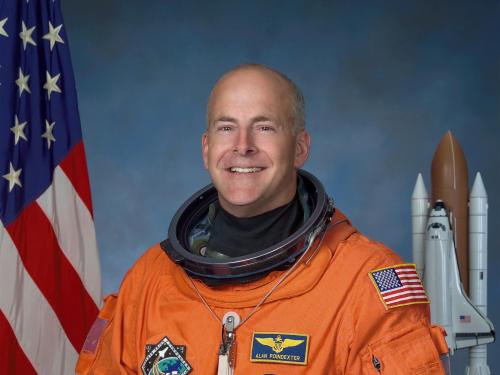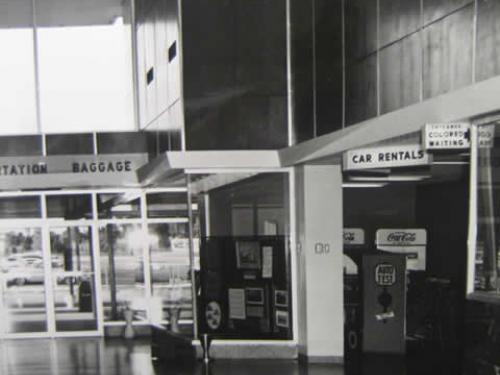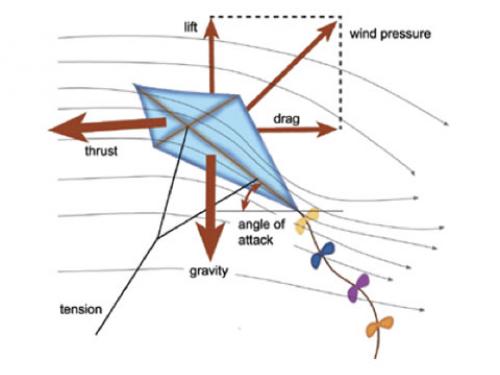

Stories of daring, stories of technological feats, stories of prevailing against the odds ... these are the stories we tell at the National Air and Space Museum. Dive in to the stories below to discover, learn, and be inspired.
Showing 601 - 610 of 701

August 08, 2012
Astronaut Alan “Dex” Poindexter joined fellow Space Shuttle commanders and crewmembers at the Museum’s Steven F. Udvar-Hazy Center recently to welcome Discovery to its new home in the Smithsonian. Poindexter commanded the next-to-last Discovery mission, STS-131, in 2010. He also served as pilot on Atlantis for the STS-122 mission in 2008. Both shuttle crews delivered equipment for construction of the International Space Station. Poindexter joined the astronaut corps in 1998 in the midst of a distinguished career as a naval aviator, first as a fighter pilot, then as a test pilot. He served two deployments in the Arabian Gulf during operations Desert Storm and Southern Watch in the early 1990s.

July 13, 2012
This post is a follow up to Preserving and Displaying the “Bat-Wing Ship” published on September 9, 2011.This post is a follow up to Preserving and Displaying the “Bat-Wing Ship” published on September 9, 2011.

June 27, 2012
Well, not exactly, but that is the nickname some have given to the RQ-16 T-Hawk (short for Tarantula Hawk, a wasp that preys on the large spiders). The T-Hawk micro air vehicle (MAV) is a small unmanned aircraft that has been making a name for itself in both military and civilian circles since it was developed by Honeywell International Corporation starting in 2003. Weighing only about 20 pounds, the T-hawk relies on a small gasoline-powered engine (like a lawn-mower) and a ducted fan to allow it to take off and land vertically (like a helicopter), fly up to 46 miles per hour for about 50 minutes, and reach heights of 10,000 feet!

June 07, 2012
This year is the 100th Anniversary of the Girl Scouts, and on Saturday, June 9th there will be an estimated 200,000 girls coming to Washington DC for the Girl Scouts Rock the Mall event. There are many famous women, including First Ladies, a Supreme Court justice, CEOs, and even astronauts who remember their days in Girl Scouting as ones that helped shape their careers. Most of us know that the Girl Scout organization was designed to empower girls and teach values as well as practical skills. But did you know that at a time when most women and girls were being told the only job for them in aviation was that of stewardess, the Girl Scouts were offering a program to teach girls to fly airplanes?

May 30, 2012
The day is Thursday, February 24, 1949; the pens on the automatic plotting boards at South Station are busy tracking the altitude and course of a rocket, which just moments before had been launched from a site three miles away on the test range of the White Sands Proving Ground.

May 24, 2012
Many older African Americans who grew up in the South painfully remember the time when black passengers had to sit in the back of busses or use separate train compartments; and when train stations and bus terminals provided separate but mostly unequal facilities such as drinking fountains, restrooms, waiting lounges, and eating facilities for black and white passengers.

May 03, 2012
Curator Dominick Pisano examines the public's fascination with celebrity airplane crashes.

April 26, 2012
Recently the National Air and Space Museum hosted Kites of Asia Family Day.

April 24, 2012
In the years before the invention of the flight data recorder, the "black box" that records essential flight data, an aircraft accident investigation could occasionally degenerate into a mere finger-pointing exercise, like this one from Russia during World War I — a group of aviation cadets at the Gatchina Military Flying School near Petrograd (now St. Petersburg) point fingers of scorn at a student pilot identified only as "Ivanov" after his less than perfect landing, fortunately injuring only his dignity.
March 28, 2012
I offer for your consideration, the ten best American aviation genre films in chronological order: